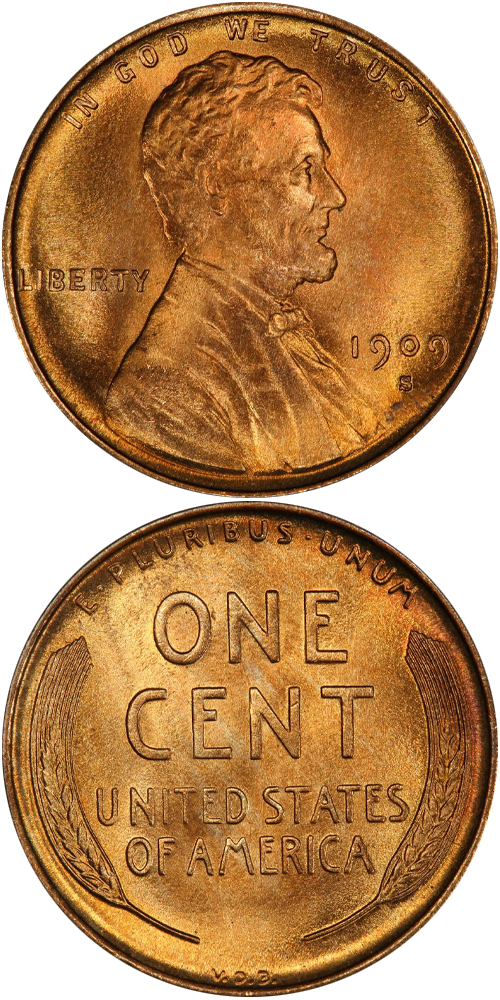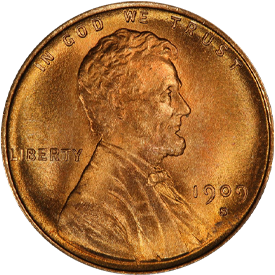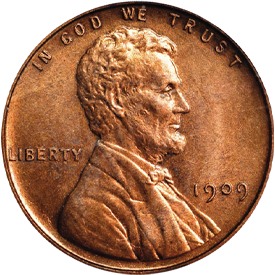Designed by: Victor David Brenner
Issue Date: 1909
Composition: 95% copper, 5% tin and zinc)
Diameter: 19 mm
Weight: 3.11 grams (48 grains)
Edge: Plain
Business Strike Mintage: 28,479,000
Proof Mintage: 420
After several decades of use, the Indian motif, which had been a familiar sight on cents since 1859, was replaced by a new style, the Lincoln cent. Designed by noted sculptor Victor David Brenner, who earlier had modeled the bust of Lincoln for several medals and plaques, the new design depicted on the obverse a head and shoulders portrait of Lincoln, bearded, facing right. IN GOD WE TRUST is above, LIBERTY is to the left, and the date is at the lower right. The reverse consists of two wheat stalks, one to the left and the other to the right, enclosing ONE CENT and UNITED STATES OF AMERICA, with E PLURIBUS UNUM above. Significantly, on the 1909 issue the initials of the designer, V.D.B., appear prominently on the bottom of the reverse, centered below the wheat stalks. A few people complained about the prominence of Brenner's initials on the cent. The opposing voices were heard at the Mint, and soon the reverse was redesigned, and the offending V.D.B. initials were removed.
1909 V.D.B. cents, the Philadelphia Mint issue, are plentiful today in all grades from Good through Uncirculated, with most being in various worn conditions. Matte Proofs were minted to the extent of 420 pieces, but most of these were "spent," for collectors preferred the earlier mirrorlike style to the matte finish. Such Matte Proofs are extremely rare today. Note, however, that there is very little difference between a sharp business strike and a Matte Proof, and if you buy a Matte Proof, be sure it comes from an expert source.








